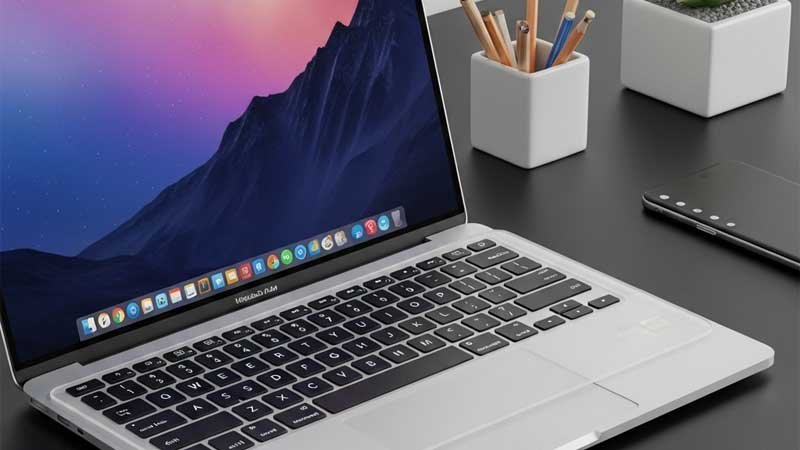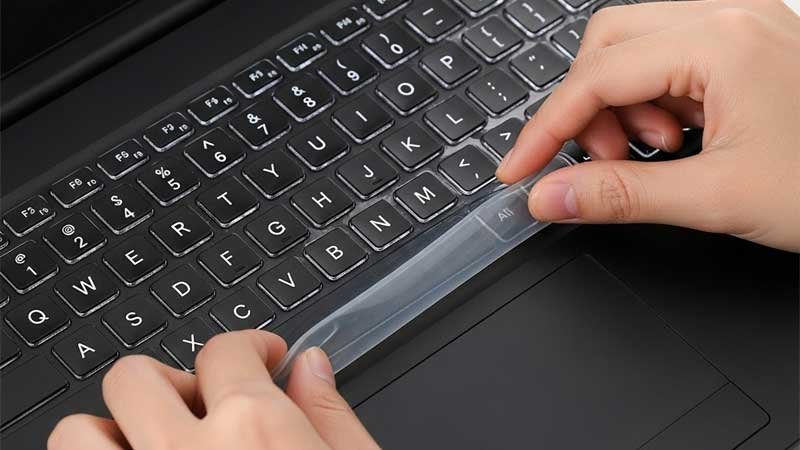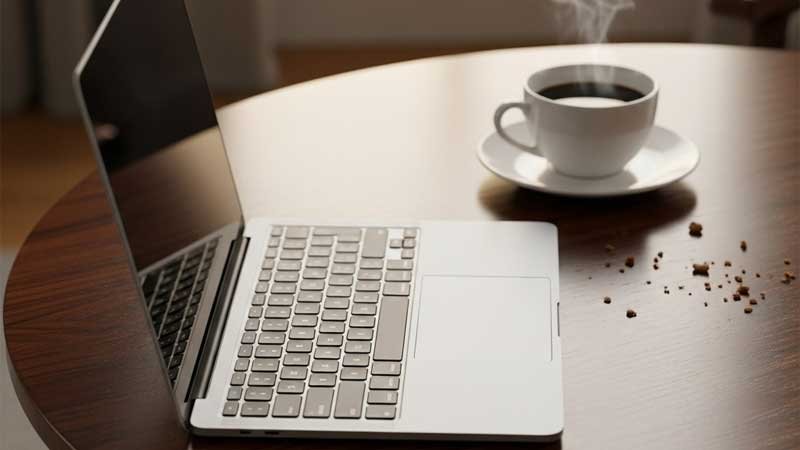As more users pay attention to daily laptop protection, silicone keyboard covers have become a common accessory. However, after using them for a while, many worry whether long-term coverage could cause hidden damage to the screen.
To help you fully understand this issue, we provide a detailed analysis along with practical advice.

Can a Silicone Keyboard Cover Damage Your Screen?
Although silicone keyboard covers are soft and non-corrosive, they can still affect your screen over time through several indirect mechanisms. Here are the most common risk factors.
| Risk Type | How It Happens | Possible Result |
| Physical Abrasion | Dust, hair, or food particles get trapped under the cover and rub against the screen when the laptop is closed or transported | Small scratches (dots or lines) on the screen surface, especially in the center area |
| Pressure Build-Up | The cover occupies part of the gap between keyboard and screen, increasing pressure when the lid is closed | Local pressure marks, watermark effect, or permanent bright spots |
| Heat Build-Up | Silicone has insulating properties and can affect heat dissipation around the keyboard, especially under heavy load | Local rise of backlight temperature, which may cause discoloration or faster aging |
| Moisture / Residue | In hot or humid environments, small silicone molecules or condensation may transfer to the screen surface | Hard-to-remove film marks or sticky traces |
| Micro-Friction | Slight movement of the laptop during transport causes repeated contact between the cover and screen | Wear of the anti-glare/anti-reflective coating (light scuff marks) |
Why Are More People Using Silicone Keyboard Covers?
Although silicone keyboard covers may pose potential risks to the screen, they remain popular among many users. This is mainly because they offer numerous practical benefits in real-world use. Understanding these advantages helps us balance protection and risk more effectively.
Dust and Dirt Protection
Laptop keyboards have tight gaps where dust, crumbs, and oils from fingers can easily accumulate. Over time, this buildup can affect key feel and the lifespan of electronic components. A silicone keyboard cover acts as a protective barrier, keeping these tiny particles out and maintaining a clean, orderly keyboard.

Water Resistance
Accidental spills of water, coffee, or other beverages are common in daily life. Liquids entering the keyboard can damage the motherboard or the keys. A silicone cover provides a layer of isolation, reducing the risk of liquid contact and giving your laptop extra protection.
Reduced Typing Noise
In quiet environments like nighttime work, libraries, or meetings, keystrokes can be disruptive. The soft silicone material absorbs part of the impact, making typing quieter and less intrusive.
Easy Cleaning
Compared with cleaning the keyboard directly, a silicone cover can be removed, washed with warm water or mild detergent, and placed back on the keyboard. It is simple, hygienic, and time-saving, making daily maintenance easy.
How to Use a Silicone Keyboard Cover Safely?
To minimize potential damage from a silicone keyboard cover, adopting simple and effective habits is key.
First, choose an ultra-thin cover, ideally less than 0.3 mm thick, and ensure it fits the keyboard snugly. A well-fitted cover reduces extra space between the keyboard and screen, lowering friction and pressure points. This helps prevent scratches or indentations.
Next, remove the keyboard cover before carrying your laptop, especially when closing the lid and placing it in a backpack. Although the cover provides protection, in tight spaces the thickness and raised keys can transfer pressure directly to the screen. Over time, this can cause local pressure marks or dead pixels.
During heavy workloads such as image rendering, video editing, or 3D modeling, it’s also advisable to temporarily remove the cover to maintain proper heat dissipation and prevent accelerated aging of the screen or internal components.
Regular cleaning of both the cover and the screen is equally important. Dust, food crumbs, and small particles trapped between the cover and screen can create micro-abrasions as the laptop moves slightly. Use a soft, lint-free cloth with a mild cleaning solution, and gently wipe the surfaces.
Finally, if you want to protect your keyboard while further reducing screen pressure, consider using a TPU keyboard cover. TPU covers are usually thinner and softer than silicone, offering better breathability and lowering heat buildup and friction risks.

Conclusion
Silicone keyboard covers don’t directly damage the screen. However, under certain conditions, such as tight laptop designs, frequent closing and carrying, or high-temperature use, they can speed up wear on the screen coating or leave pressure marks. The good news is that these issues are easy to avoid. As long as you use the cover correctly and remove it at the right times, your screen will stay protected.
If you’re looking to create high-quality silicone products tailored to your needs, we’d be happy to help. Our team has the experience and manufacturing capability to turn your ideas into reliable solutions. Feel free to reach out to start your custom silicone project.